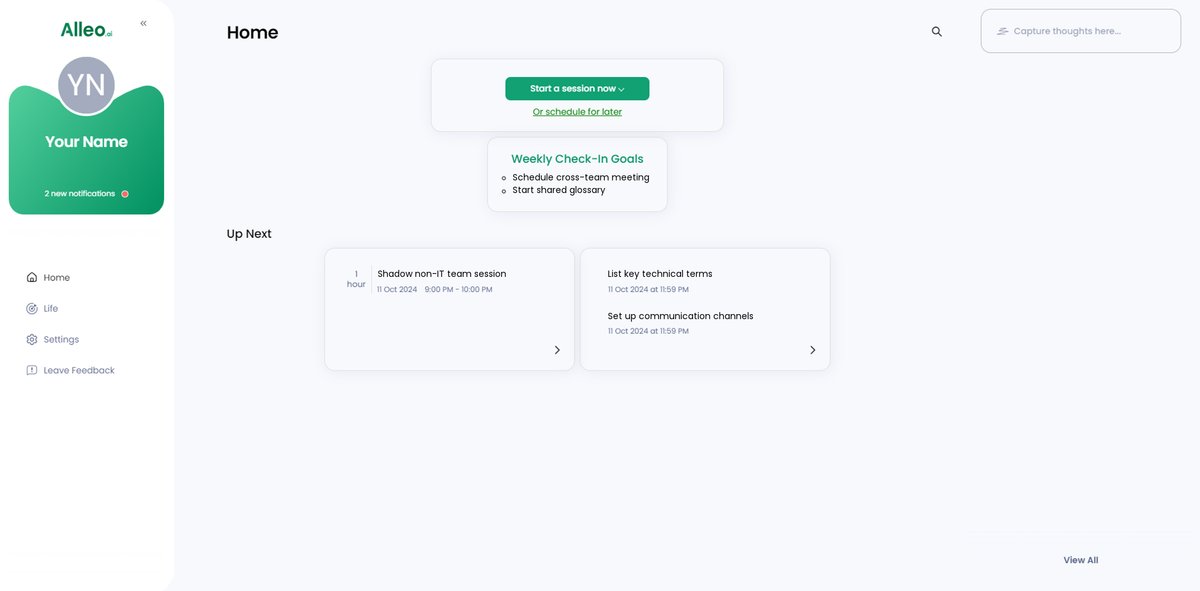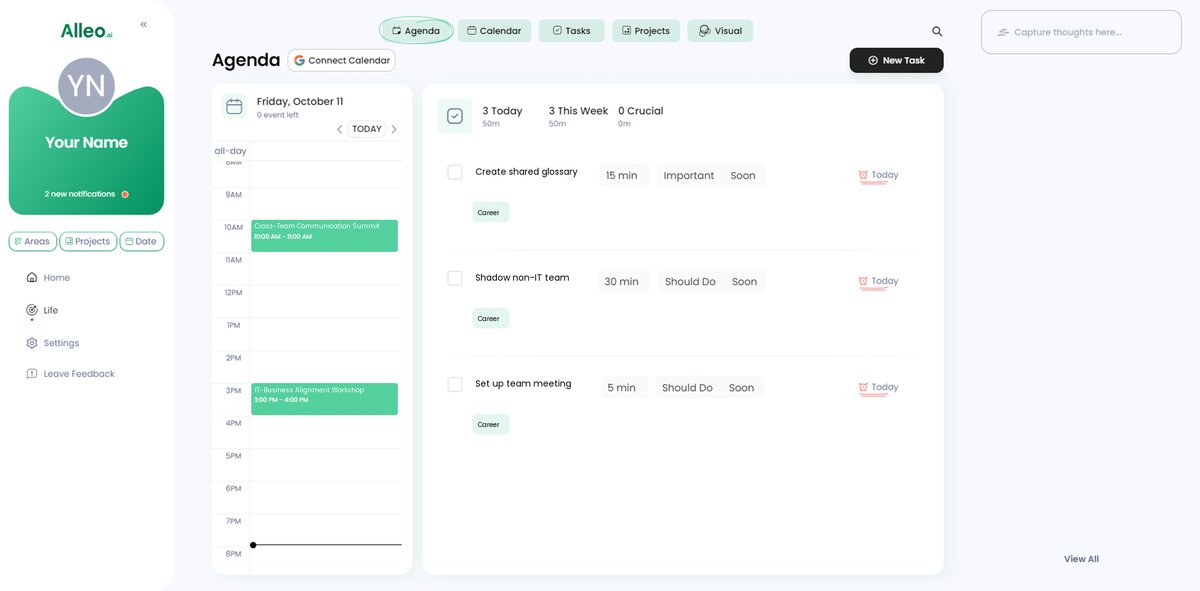How to Bridge Communication Gaps Between IT and Non-IT Teams: A New Leader’s Guide to Success
Are you struggling to bridge the communication gap between IT and non-IT teams as a new leader? Bridging IT non-IT communication is crucial for effective cross-functional collaboration.
As a life coach, I’ve guided many professionals through similar transitions. I understand the challenge of learning to communicate effectively with both technical and non-technical team members, often requiring IT jargon translation for non-technical staff.
In this article, you’ll discover specific strategies to improve communication and build a cohesive team. We’ll cover regular cross-functional meetings, creating a shared glossary, implementing a unified communication platform, and shadowing non-IT teams. These approaches are key to building trust between IT and business units and aligning IT goals with business objectives.
Let’s dive in and explore how to foster a culture of mutual understanding while bridging IT non-IT communication.

Understanding the Communication Challenges
Bridging the communication gap between IT and non-IT teams is a complex challenge. Many clients initially struggle with understanding the different communication styles required for each group, highlighting the importance of bridging IT non-IT communication.
This disconnect can lead to decreased productivity and increased frustration, emphasizing the need for effective cross-functional collaboration.
In my experience, people often find that communication gaps significantly impact team morale. When team members cannot effectively communicate, misunderstandings and conflicts arise, hindering the process of building trust between IT and business units.
This can create a stressful work environment, ultimately affecting overall performance and making it difficult to align IT goals with business objectives.
Furthermore, the financial impact is staggering. Ineffective communication costs companies millions annually, highlighting the urgency of addressing this issue and improving organizational communication skills.
Adopting effective communication strategies is crucial for new leaders to succeed in bridging IT non-IT communication. By understanding the root causes of these challenges, you can start implementing solutions that foster better collaboration and mutual understanding between departments.

Roadmap to Bridging the Communication Gap
Overcoming this challenge requires a few key steps. Here are the main areas to focus on to make progress in bridging IT non-IT communication:
- Establish regular cross-functional team meetings: Schedule and facilitate open discussions to address ongoing challenges and successes, fostering effective cross-functional collaboration.
- Create a shared technical-business glossary: Collaborate on a glossary of key terms to ensure mutual understanding, effectively translating IT jargon for non-technical staff.
- Implement a unified communication platform: Adopt a platform that supports multiple channels and integrates with existing tools, leveraging technology for better interdepartmental communication.
- Shadow non-IT teams to understand their workflows: Spend time with non-IT teams to observe daily tasks and communication styles, building trust between IT and business units.
Let’s dive in to explore these strategies for bridging IT non-IT communication!
1: Establish regular cross-functional team meetings
Establishing regular cross-functional team meetings is essential for new IT leaders to bridge IT non-IT communication gaps.
Actionable Steps:
- Schedule bi-weekly meetings with IT and non-IT members for effective cross-functional collaboration.
- Set clear agendas focusing on current projects and communication issues, including IT jargon translation for non-technical staff.
- Rotate leadership roles to encourage diverse perspectives and foster a culture of mutual understanding.
Explanation: Implementing these steps fosters open dialogue, builds rapport, and promotes mutual understanding between IT and business units.
According to ClickUp, regular meetings can significantly reduce communication gaps and improve team productivity, which is crucial for bridging IT non-IT communication.
By encouraging diverse perspectives, you create a more inclusive environment where every team member feels valued, aligning IT goals with business objectives.
Benefits of regular cross-functional meetings include:
- Enhanced collaboration between departments, improving organizational communication skills
- Faster problem-solving through diverse input from cross-departmental project teams
- Improved team morale and engagement, building trust between IT and business units
Taking these steps will help you build a cohesive team and enhance overall communication, leveraging technology for better interdepartmental communication.
2: Create a shared technical-business glossary
Creating a shared technical-business glossary is critical for bridging IT non-IT communication and ensuring mutual understanding between IT and non-IT teams.
Actionable Steps:
- Collaborate with both teams to compile a glossary of key terms.
- Include technical jargon, business acronyms, and common phrases to facilitate IT jargon translation for non-technical staff.
- Ensure the glossary is accessible and regularly updated to support effective cross-functional collaboration.
- Conduct training sessions to familiarize team members with the glossary.
- Use real-life examples to illustrate each term, fostering a culture of mutual understanding.
- Create interactive quizzes to reinforce learning and improve organizational communication skills.
- Integrate the glossary into daily workflows.
- Encourage team members to refer to it during meetings and communications, aligning IT goals with business objectives.
- Highlight the glossary in onboarding materials for new hires to build trust between IT and business units.
Explanation:
Creating a shared glossary helps bridge communication gaps by ensuring everyone speaks the same language. This is essential for improving collaboration and reducing misunderstandings when bridging IT non-IT communication.
According to LinkedIn, strategic thinking in UX design emphasizes the importance of clear communication. By integrating the glossary into daily workflows, teams can streamline their communication and enhance productivity.
This approach sets the stage for a more cohesive and efficient work environment, leveraging technology for better interdepartmental communication.

3: Implement a unified communication platform
Implementing a unified communication platform can streamline interactions and bridge gaps between IT and non-IT teams, effectively bridging IT non-IT communication.
Actionable Steps:
- Choose a versatile communication platform for effective cross-functional collaboration.
- Ensure it supports multiple channels like chat, email, and video.
- Provide training for team members on how to use the platform effectively, including IT jargon translation for non-technical staff.
- Standardize communication protocols.
- Define clear guidelines for different types of communication, fostering a culture of mutual understanding.
- Encourage the use of screen recording tools for complex explanations, improving organizational communication skills.
Explanation:
Implementing these steps will ensure that all team members are on the same page, reducing misunderstandings and improving collaboration, thus bridging IT non-IT communication.
According to ClickUp, using a unified communication platform can significantly enhance productivity and team cohesion.
By setting clear protocols, you create a structured environment where everyone knows how to communicate effectively, aligning IT goals with business objectives.
Key features to look for in a unified communication platform for bridging IT non-IT communication:
- Integration with existing tools and workflows
- Robust security and data protection measures
- Scalability to accommodate team growth
Taking these steps will help you build a more connected and efficient team, leveraging technology for better interdepartmental communication.
4: Shadow non-IT teams to understand their workflows
Shadowing non-IT teams is essential for new IT leaders to gain insight into their workflows and communication styles, helping in bridging IT non-IT communication gaps.
Actionable Steps:
- Arrange shadowing sessions with non-IT teams.
- Focus on observing daily tasks and communication methods.
- Take detailed notes on pain points and areas needing improvement.
- Conduct debrief sessions to discuss findings.
- Share observations with both teams to identify common challenges.
- Brainstorm collaborative solutions to address these issues, promoting effective cross-functional collaboration.
Explanation:
Observing non-IT teams helps IT leaders understand their workflows and communication styles. This fosters empathy and improves collaboration, building trust between IT and business units.
According to LinkedIn, strategic thinking in UX design emphasizes the need for clear communication and understanding across teams. Implementing these steps will bridge communication gaps and enhance team cohesion.
Insights gained from shadowing non-IT teams:
- Identification of inefficient processes
- Understanding of unique departmental challenges
- Opportunities for technology-driven improvements, aligning IT goals with business objectives
By following these steps, you will create a more collaborative and efficient work environment, fostering a culture of mutual understanding between IT and non-IT staff.

Partner with Alleo to Bridge Communication Gaps
We’ve explored the challenges of bridging IT non-IT communication, how solving them can benefit your leadership, and actionable steps to achieve effective cross-functional collaboration.
Did you know you can work directly with Alleo to make this journey of bridging IT non-IT communication easier and faster?
Alleo offers tailored coaching support to help you navigate these transitions and improve organizational communication skills. Set up an account, create a personalized plan, and work with our AI coach to overcome communication challenges and foster a culture of mutual understanding.
The coach will follow up on your progress, handle changes, and keep you accountable via text and push notifications, leveraging technology for better interdepartmental communication.
Ready to get started for free? Let me show you how to begin bridging IT non-IT communication gaps!
Step 1: Log In or Create Your Account
To start bridging communication gaps with our AI coach, log in to your account or create a new one to begin your journey towards effective team communication.

Step 2: Choose Your Focus Area
Select “Setting and achieving personal or professional goals” to start addressing communication gaps between IT and non-IT teams, as this will help you develop strategies to improve collaboration and productivity in your workplace.

Step 3: Select “Career” as Your Focus Area
Choose “Career” as your focus area to address communication challenges between IT and non-IT teams, aligning with your goal of bridging gaps and improving leadership effectiveness in your professional environment.

Step 4: Starting a Coaching Session
Begin your journey by scheduling an intake session with your AI coach to establish a personalized plan for bridging communication gaps between IT and non-IT teams.

Step 5: Viewing and Managing Goals After the Session
After your coaching session on bridging IT and non-IT communication gaps, check the Alleo app’s home page to view and manage the goals you discussed, allowing you to track your progress and stay accountable.

Step 6: Adding events to your calendar or app
Use the calendar and task features in Alleo to schedule and track your progress on communication improvement activities, such as cross-functional meetings and shadowing sessions, helping you stay accountable and measure your success in bridging the gap between IT and non-IT teams.

Take the First Step Towards Bridging Communication Gaps
Building a bridge between IT and non-IT teams is no small feat. However, with the right strategies, you can create a more cohesive and productive team, effectively bridging IT non-IT communication gaps.
Remember, establishing regular cross-functional meetings, creating a shared glossary for IT jargon translation for non-technical staff, implementing a unified communication platform, and shadowing non-IT teams are all actionable steps you can take towards effective cross-functional collaboration.
I understand the challenges you’re facing in bridging IT non-IT communication, and I’m here to support you in fostering a culture of mutual understanding.
Don’t wait to start making these changes and building trust between IT and business units.
By leveraging tools like Alleo, you can streamline this process and achieve better communication within your teams, aligning IT goals with business objectives.
Ready to transform your leadership and improve organizational communication skills? Try Alleo for free today and take the first step towards effective communication and bridging IT non-IT communication.